BASIC PROJECT DATA
Project ID: PA1A155
NEED AND ADDED VALUE FOR THE DANUBE REGION STRATEGY
The movement of freight is the most important economic use of the Danube, Europe’s second-longest river. Removing the bottlenecks for navigation is necessary to achieve the recommended Level of Service.
OBJECTIVE(S) OF THE PROJECT
The study aims at improving the navigation along the Hungarian section of the Danube by carrying out preparatory studies for the removal of 31 bottlenecks. It is part of a Global Project promoting the development and upgrading of the Rhine-Danube Corridor to reach stable navigation conditions throughout the year and in all riparian countries. The study is a precondition for the implementation of any physical interventions aimed at improving the navigability and at eliminating the IWW bottlenecks on the Hungarian section of the Rhine-Danube Corridor.
PLANNED PROJECT ACTIVITIES
The study consists of 9 activities from the completion of the Environmental Impact Assessment and building permits documentation to the drafting of the tender designs.
TRANSBOUNDARY IMPACT
Removing bottlenecks for navigation is beneficial for the entire Danube Region.
PROJECT BENEFICIARIES / TARGET GROUPS
The waterway users and businesses operating in the Danube Region will be the main beneficiaries of the measures prepared in the course of the study.
STATUS AND TIMEFRAME
Start date: September 2015
End date: September 2022
FINANCING
Total budget: 6,309,295 EUR
EU funds: 5,362,901 EUR are being funded by Connecting Europe Facility (CEF) 2014-2020
National funds: 946,394 EUR
PROJECT TEAM
Project leader: Hungarian Ministry of National Development
Address: Fő utca 44-50, 1011 Budapest / Hungary
PROJECT ENVIRONMENT
PROJECT CROSS – REFERENCE
Hajózzunk a Dunán! – Improvement of the navigability on the Danube in Hungary (PA1A032)
EUSDR EMBEDDING
EUSDR COMPLIANCE
OTHER RELEVANT ISSUES
FOLLOW – UP PROJECT
Physical measures to solve the critical bottlenecks along the Hungarian Danube would have to be planned in follow-up projects.
META DATA
Data provided by: INEA website, project information (update provided by viadonau) – 25.03.2019



